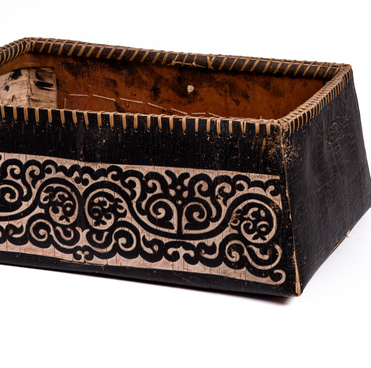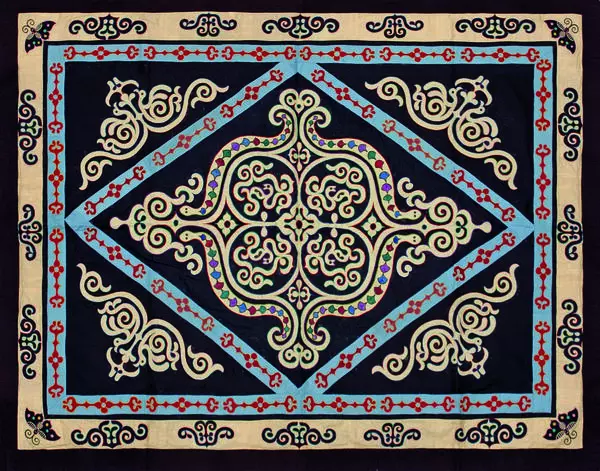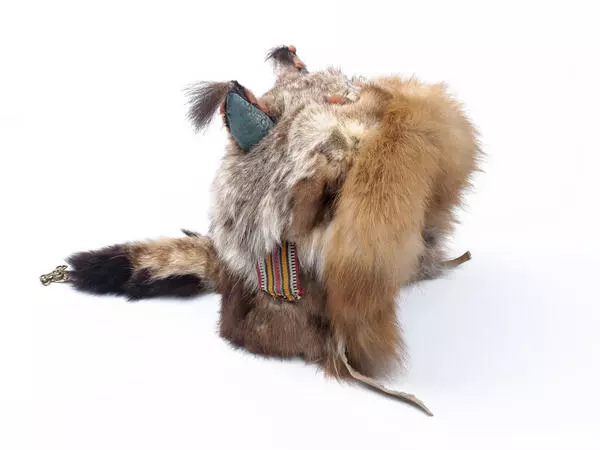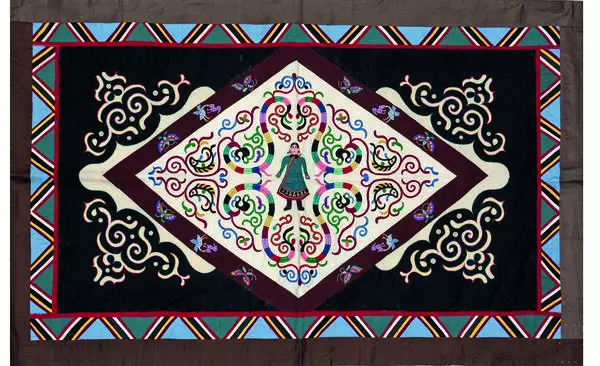The peoples of the Amur region started to use textile carpets relatively recently, presumably not before the 19th century, but prior to that time they used to have traditional items with a carpet-like pattern spread out on the surface. These were pieces of bedding — a mattress and a blanket.
Textile carpets were most widespread among the Nanai and Ulchi people. Most often they were decorated in the techniques of appliqué, weaving from strips of cloth, embroidery and mosaics. Amur craftsmen used two types of appliqué: ordinary overlay, and more complicated underlay or slit ornament, which was used less frequently.
The edges of the appliqué were decorated in different ways: embroidery, pencil edge (turned edge), or occasionally with braid. Different types of artistic stitches were used in embroidery, for example, “relief double-sided damask stitch”, for which a thin thread of fish skin was glued to the edge of the appliqué and covered with smooth silk threads.
Most often double chain stitch or, as it was called in the Amur region, “kozlik” (herringbone) was used in carpet weaving. A characteristic feature of this technique was the alternation of threads of different colors at short intervals. This somewhat blurred the boundary of the pattern and the background, smoothing the contrast between them and providing the contour of the pattern with the effect of shimmering and iridescent color.
The overall color scheme of carpets was distinguished by contrast and the indispensable use of dark-colored fabrics in the background, which strengthened it. Before the pattern was applied, some glue was spread on the reverse side of the fabric, making it dense and preventing the crumbling of the edges. The elements of the appliqué were glued to the background fabric with fish glue.
The exhibit was created
by the Ulchi craftswoman Ochu Rosugbu, a member of the USSR Union of Artists.
Her art influenced many Ulchi masters, especially in the village of Bulava,
where she lived for a long time.





